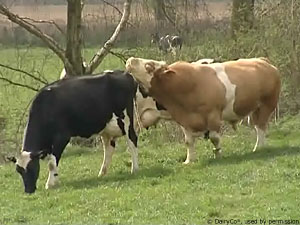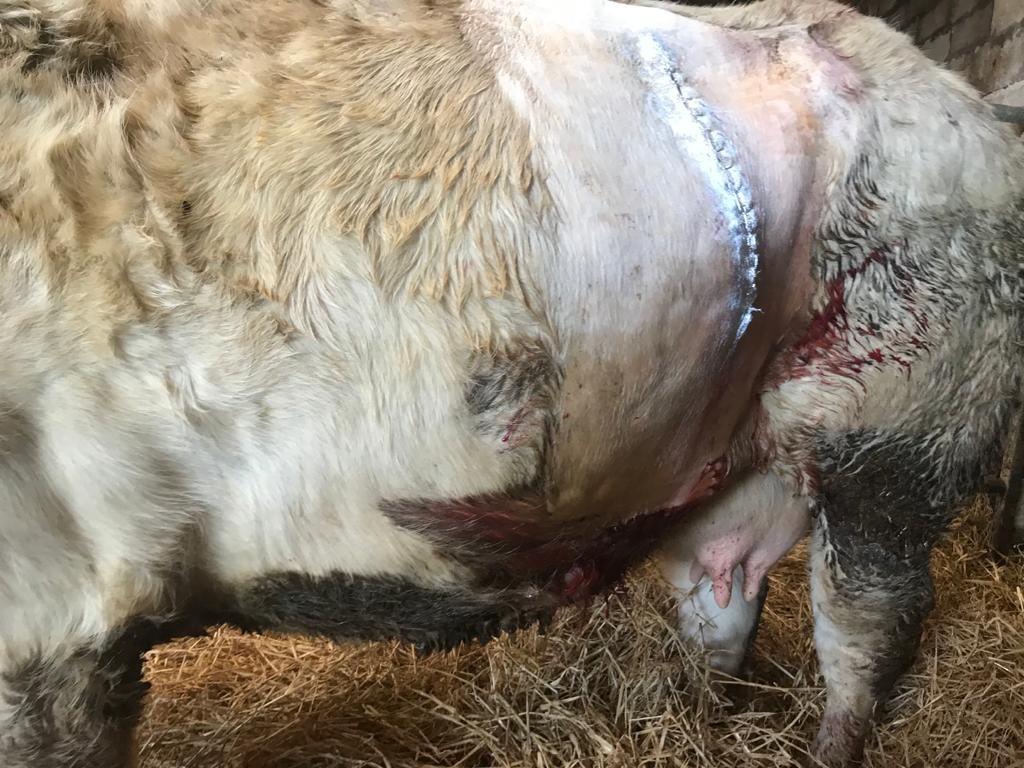Caesarean Section In Cattle
8 October 2019The legacy of a great year for grass is an increasing number of cows likely to require a caesarean section. While a natural birth is the goal, when a section is required there are several things that are needed for a successful outcome.

Tips for a Successful Outcome
Call for veterinary assistance promptly
- If an animal needs a caesarean, the quicker the decision is made, the better.
- As a guide, when a live calf cannot be delivered after 15-20 minutes of manipulation, the vet should be called.
- Excessive kicking of the calf is usually a sign of distress and is a bad sign.
- The survival rate of the cow is poorer if the calf is dead, particularly if it has been dead for some time.
Prepare the surroundings:
- Ensure there is good lighting for the procedure.
- The surroundings should be clean and dry. If fresh straw is to be applied, this should be done as soon as possible to allow time for clouds of dust to settle before the operation starts. This is to reduce contamination of the surgical site.
Restraint:
- The animal must be adequately restrained. This is to minimise the risk of injury to the farmer, vet and animal.
- There are several options but a crush where both sides can be opened fully is one good option.
- In some cases, it may be necessary to prepare the animal in a crush and then move the animal out for the operation.
- Some animals may require sedation, but the vet will decide this on arrival.
Other factors:
- Have an assistant with clean hands and arms available to scrub and assist the vet if necessary.
- Clean warm water in clean buckets is important.
Care of the newborn calf:
- Clear the airways by clearing mucus and membranes from the mouth and nose.
- The calving jack may be used to lift the calf upside down for a very short period to help the mucus run out of the airways. Hanging a calf over a gate is not recommended.
- If the calf is not breathing within 30 seconds, the following methods may help to stimulate breathing.
- Straw up the nose
- Cold water into the ears or over the head can elicit the gasp reflex
- Massage chest with the calf’s front limb
- Rubbing the chest with clean straw
- Check for excessive haemorrhage from the navel.
Care of the cow
- The cow should eat, drink and pass faeces naturally after the operation.
- The cow should be monitored for any signs of
- Haemorrhage – call for veterinary assistance
- Milk fever – administer calcium
- Retained foetal membranes – should be expelled within 12-24 hours but if still retained after 48 hours, phone the vet.
- Plenty of fresh forage and water for the cow. After normal calving, the cow has a natural reflex to drink water which lasts up to about 20 minutes. After a caesarean, this reflex is not present so ensure there is fresh water in front of her as soon as possible.
- Bed the cow and calf on plenty of straw for cushioning and warmth as the cow may lie down more than usual at the start.
- If a course of treatment is prescribed by the vet, it is essential to complete the full course.
Alwyn Jones, alwyn.jones@sac.co.uk
Useful Links
Sign up to the FAS newsletter
Receive updates on news, events and publications from Scotland’s Farm Advisory Service


